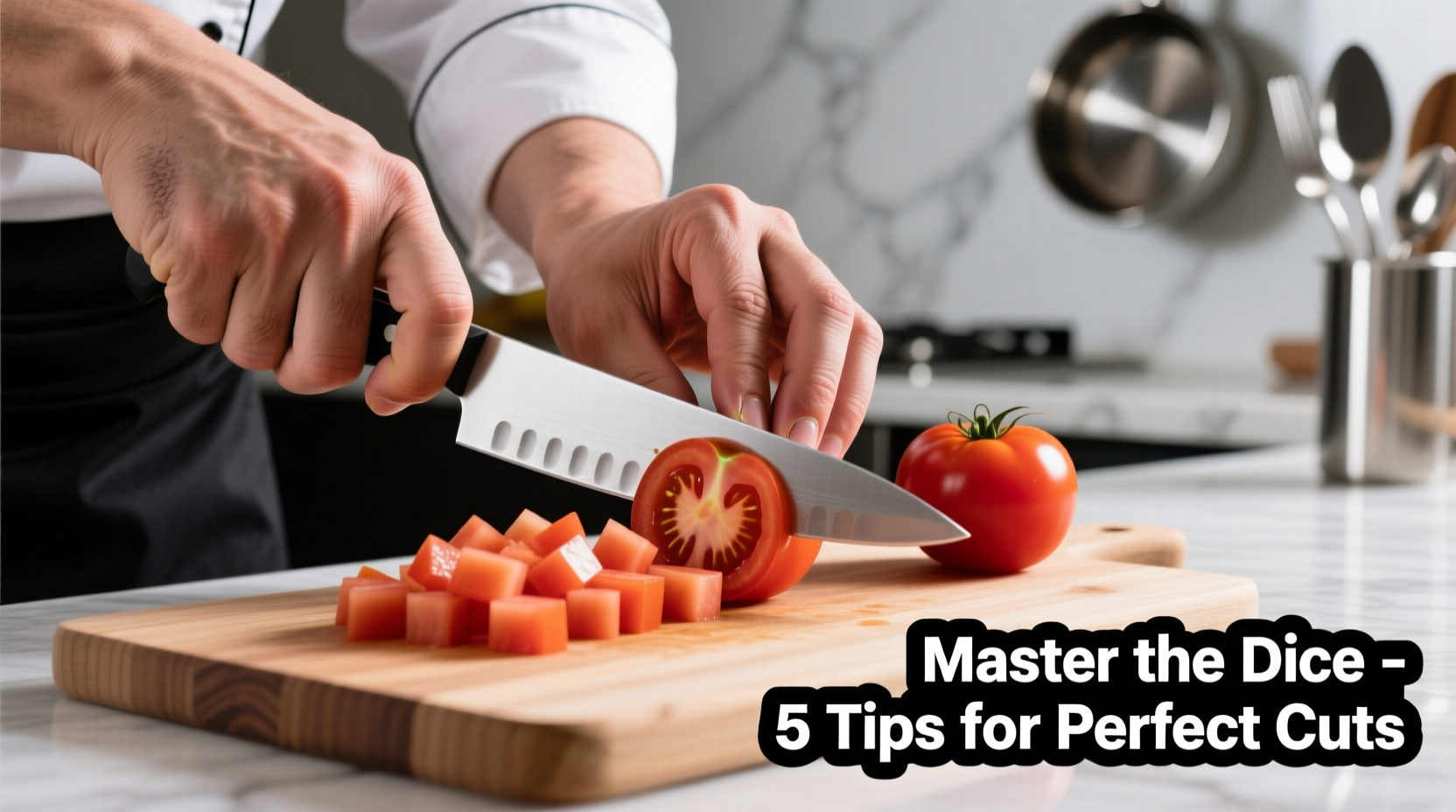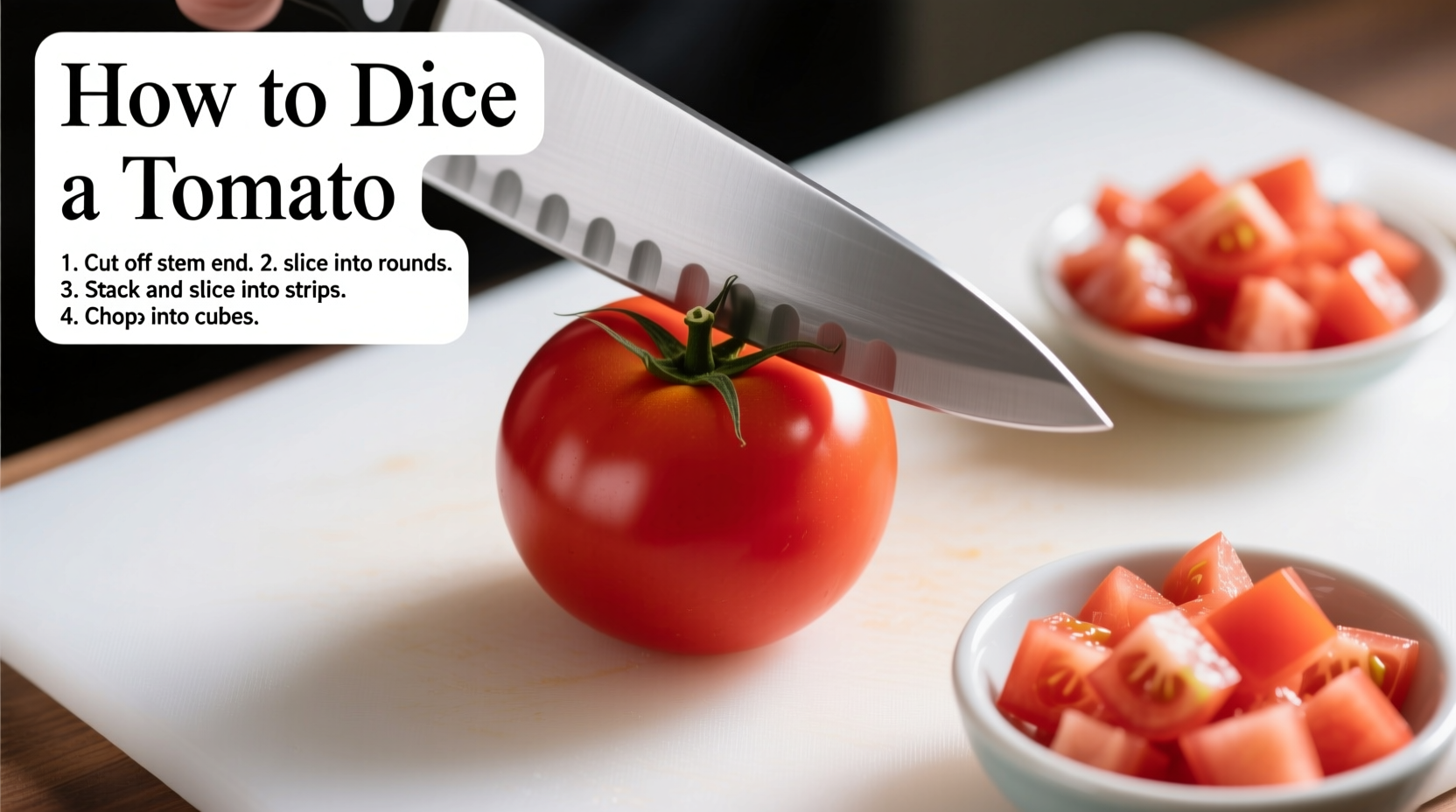Getting perfect tomato cubes isn't just about appearance—it affects texture, flavor distribution, and overall dish quality. As a chef with years of experience teaching knife skills, I've seen countless home cooks struggle with tomatoes turning into a pulpy mess. The secret lies in understanding tomato anatomy and using the right technique for your specific tomato variety.
Why Proper Tomato Dicing Matters
Tomatoes contain delicate flesh surrounding gel-filled seed pockets. When improperly handled, the flesh breaks down, releasing excess liquid that dilutes flavors and creates soggy dishes. According to the FDA's fresh produce handling guidelines, proper preparation preserves both nutritional value and texture. Professional kitchens follow specific dicing methods because:
- Even-sized pieces cook uniformly
- Controlled moisture content prevents dish dilution
- Intact cell structure maintains flavor compounds
- Professional presentation enhances dining experience
Essential Tools for Perfect Tomato Dicing
You don't need specialized equipment, but the right tools make a significant difference:
- Sharp chef's knife (6-8 inches): A dull blade crushes rather than cuts tomato cells
- Stable cutting board: Wood or soft plastic prevents slipping
- Small spoon: For cleanly removing seed gel
- Bowl: To catch excess liquid during preparation
Research from the Culinary Institute of America confirms that knife sharpness directly impacts produce integrity—dull blades require more pressure, rupturing more cells and releasing excess moisture.
Step-by-Step Tomato Dicing Technique
Step 1: Prepare Your Tomato
Wash and dry the tomato thoroughly. Place it stem-side down on your cutting board. Using a sharp knife, slice off the stem end (about 1/4 inch). This creates a stable base and removes tough connective tissue.
Step 2: Halve and Seed
Cut the tomato horizontally through the equator. Gently squeeze each half over a bowl to release excess seeds and gel. Use a small spoon to scrape out remaining seeds—this critical step prevents watery results in your final dish.
| Tomato Type | Seeding Required? | Recommended Cube Size | Best Uses |
|---|---|---|---|
| Roma/Plum | Minimal | 1/4 inch | Salsas, sauces |
| Beefsteak | Essential | 1/2 inch | Caprese, salads |
| Cherry/Grape | Not recommended | Halve or quarter | Salads, roasting |
Step 3: Create Uniform Slices
Place each seeded half cut-side down. Make vertical slices according to your desired cube size (typically 1/4 to 1/2 inch), keeping fingers curled safely away from the blade. Consistent spacing ensures even cooking and presentation.
Step 4: Dice into Cubes
Rotate the tomato 90 degrees and make horizontal cuts through your slices. Use a gentle rocking motion with your knife rather than pressing down forcefully. Transfer diced pieces to your recipe immediately or store properly (see below).

Avoiding Common Tomato Dicing Mistakes
Even experienced cooks make these errors that compromise results:
- Skipping the seeding step: Leads to watery dishes—especially critical for salsas and cold preparations
- Using a serrated knife: Tears rather than cuts tomato flesh, accelerating breakdown
- Cutting too small for the application: Results in pieces that disappear in cooked dishes
- Handling tomatoes excessively: Body heat accelerates enzymatic breakdown
- Dicing too far in advance: Cut surfaces oxidize and lose freshness rapidly
Food science research from UC Davis shows that enzymatic activity in cut tomatoes increases dramatically after 30 minutes at room temperature, explaining why freshly diced tomatoes always outperform pre-cut versions.
Storing Diced Tomatoes Properly
If you must prepare tomatoes ahead of time:
- Place diced tomatoes in an airtight container
- Add a paper towel to absorb excess moisture
- Refrigerate immediately
- Use within 24 hours for best quality
Never store diced tomatoes in water—the USDA Food Safety and Inspection Service warns this practice leaches flavor compounds and accelerates spoilage. For cooked applications like sauces, consider dicing tomatoes directly into your cooking vessel to minimize oxidation.
Adapting Your Technique for Different Recipes
The perfect dice size depends on your final application:
- Salsas and pico de gallo: 1/4-inch cubes maintain texture without overwhelming other ingredients
- Salads and caprese: 1/2-inch cubes provide satisfying mouthfeel
- Cooked sauces and soups: 1/3-inch cubes balance quick cooking with visual appeal
- Garnishes: Small brunoise (1/8-inch) for refined presentation
Professional chefs adjust their dicing technique based on the tomato's ripeness—firmer tomatoes can handle smaller cuts while ripe specimens benefit from slightly larger pieces to maintain structure.











 浙公网安备
33010002000092号
浙公网安备
33010002000092号 浙B2-20120091-4
浙B2-20120091-4